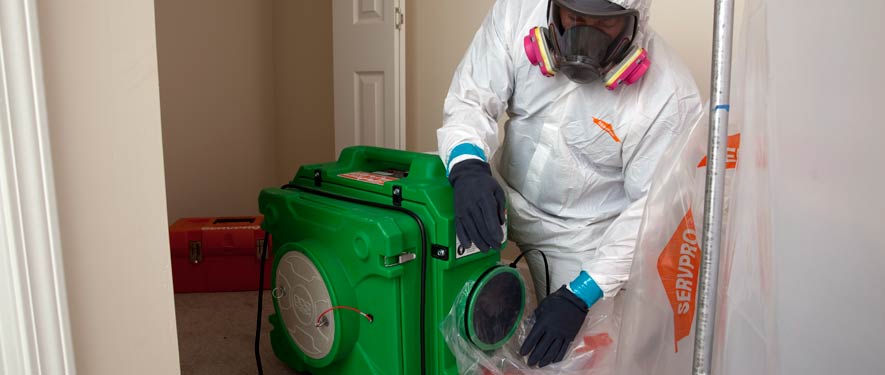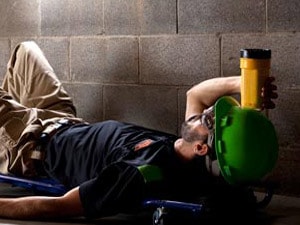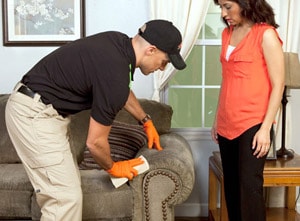
Sewage Cleanup and Restoration
How to Clean Up Sewage
- Wear personal protection gear.
- Remove any excessive water
- Shovel any solids into strong plastic bags and dispose of them immediately;
- Use paper towels and rags to soak up any remaining water;
- Remove any sewage-contaminated items and materials
- Remove any saturated carpeting, baseboards, wall paneling, insulation, flooring, etc. and take them to appropriate disposal sites;
- Hose down the area with clean water and wash all affected surfaces with a household detergent solution to remove any remaining sewage contamination and dirt;
- Wash all contaminated surfaces with a solution of chlorine bleach (or other bactericidal disinfectant) and cold water
- Take extra care when cleaning the floors
- Dry the area as quickly as possible
Sewage Backup or Toilet Overflow? Call Us Today – (704) 393-7890
There are three major types of contaminated water. SERVPRO of NW Charlotte, Lincoln County, Southern and NE Gaston County will inspect that contaminated water to determine the type of water and then plan the appropriate response to safely restore your home or business.
The three types of contaminated water:
Category 1: "Clean Water"
This is water from a clean source, such as a broken clean water supply line or faucet. If left untreated, category 1 water can quickly degrade into category 2 or 3 water depending upon such factors as time, temperature, and contact with contaminants.
- Water from a clean source like a broken water line
- If left untreated, can degrade into category 2 or 3
Category 2: "Gray Water"
This water has a significant level of contamination that could cause discomfort or illness if ingested. Sources for category 2 water may include washing machine overflow; toilet overflow with some urine, but no feces; or dishwasher overflow.
- May contain bacteria and viruses
- Can quickly degrade into category 3 if left untreated
Category 3: "Black Water"
This water is grossly unsanitary and could cause severe illness or death if ingested, and any contact should be avoided. Sources for category 3 water could include flooding from rivers or streams, water from beyond the toilet trap, water from the toilet bowl with feces, or standing water that has begun to support microbial growth.
- May contain untreated sewage, harsh chemicals, and microbes
- Water from flooding rivers or sewer backup
24 Emergency Service
Sewage backup should be considered an emergency and dealt with as quickly as possible. We are the water damage restoration specialists with specific training and expertise to safely restore your home or business.





 24/7 Emergency Service
24/7 Emergency Service




